Xylophanes marginalis
|
|
Updated as per personal communication with Larry Valentine (Itanhandu, Minas Gerais, Brazil); September 10, 2012
Updated as per personal communication with Ezequiel Bustos (Shilap revta. lepid. 43 (172) diciembre, 2015, 615-631 eISSN 2340-4078 ISSN 0300-5267), January 4, 2016
Updated as per personal communication with Joao Amarildo Ranguetti (Massaranduba, Santa Catarina, Brazil); October 10, 2018
|
Xylophanes marginalis
Clark, 1917
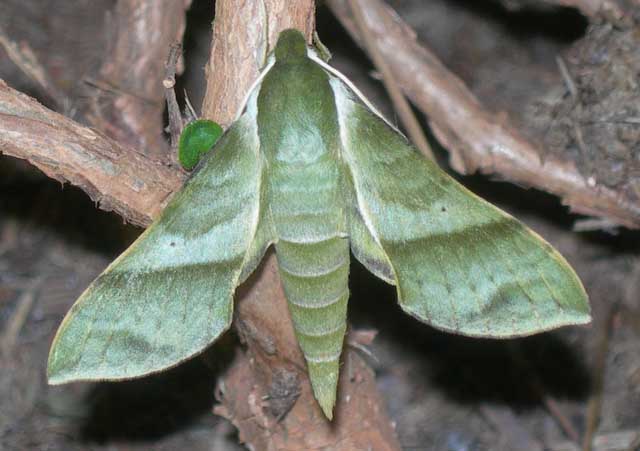
Xylophanes marginalis, Itanhandu, Minas Gerais. Brazil,
September 8, 2012, courtesy of Larry Valentine.
This site has been created by Bill Oehlke.
Comments, suggestions and/or additional information are welcomed by Bill.
TAXONOMY:
Family: Sphingidae, Latreille, 1802
Subfamily: Macroglossinae, Harris, 1839
Tribe: Macroglossini, Harris, 1839
Genus: Xylophanes Hubner [1819] ...........
Species: marginalis
|
DISTRIBUTION:
Xylophanes marginalis moths fly in
Brazil (specimen type locality): Minas Gerais, Brazil (LV); Massaranduba (JAR), Santa Catarina, Brazil, and
Paraguay: (possibly Misiones and Itapua (WO??);
Argentina: Misiones.
This species had been equated with
Xylophanes tyndarus,
but in Hawkmoths of Argentina, as per More, Kitching and Cocucci,
it is treated as a distinct species.
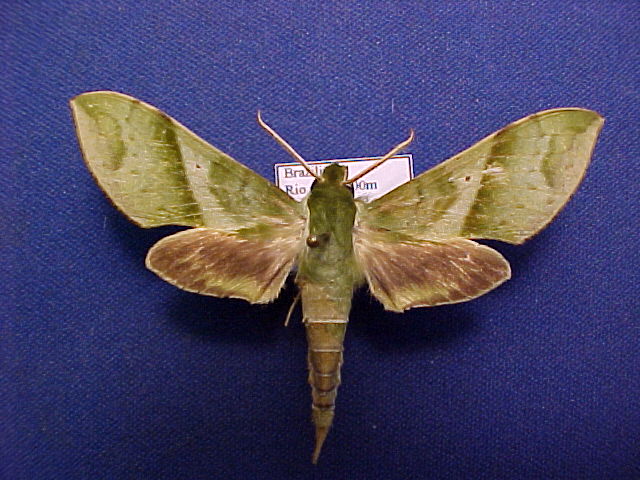
Xylophanees marginalis courtesy of John Vriesi.
FLIGHT TIMES:
Xylophanes marginalis adults probably
brood continuously. Larry Valentine sends images of a moth observed on the wing on September 9, 2010, in Itanhandu,
Minas Gerais, Brazil. Joao Amarildo sends images from an October flight in Santa Catarina, Brazil.
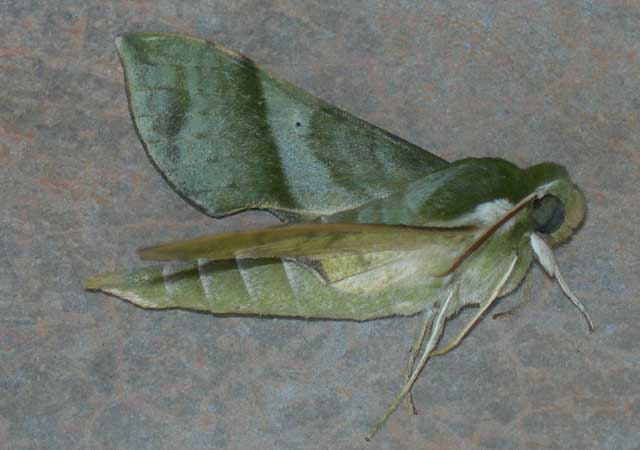
Xylophanes marginalis, Itanhandu, Minas Gerais, Brazil,
September 8, 2012, courtesy of Larry Valentine.
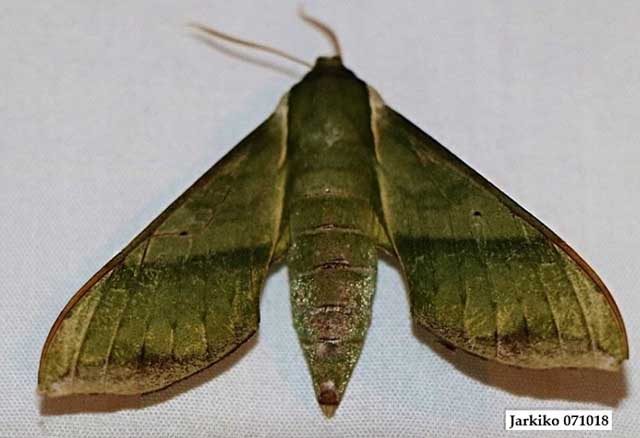
Xylophanes marginalis female, Massaranduba, Mato Grosso, Brazil,
October 10, 2018, courtesy of Joao Amarildo Ranguetti, id by Jean Haxaire.
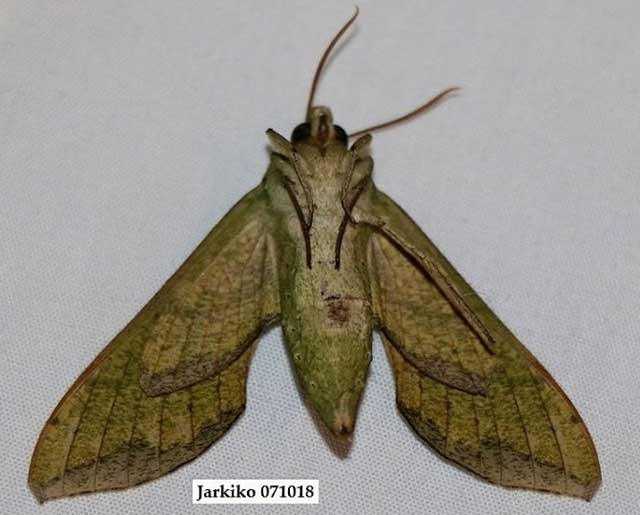
Xylophanes marginalis female (verso), Massaranduba, Mato Grosso, Brazil,
October 10, 2018, courtesy of Joao Amarildo Ranguetti, id by Jean Haxaire.
ECLOSION:
Pupae probably wiggle to surface from subterranean chambers just prior to eclosion.
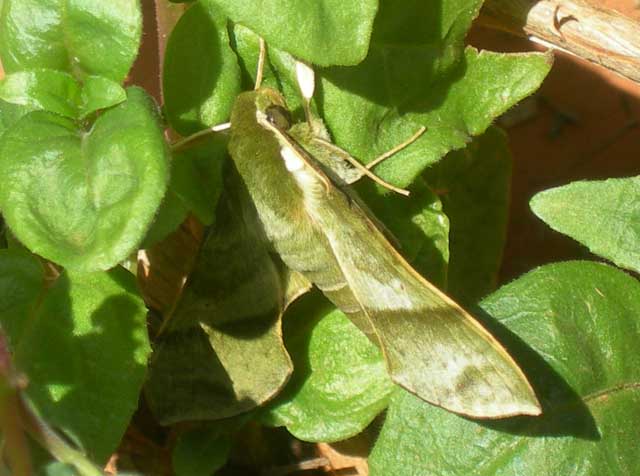
Xylophanes marginalis, Itanhandu, Minas Gerais. Brazil,
September 8, 2012, courtesy of Larry Valentine.
SCENTING AND MATING:Females call in the males with a
pheromone released from a gland at the tip of the
abdomen.
Males come in to lights very readily, but females are seldom taken in
that way.
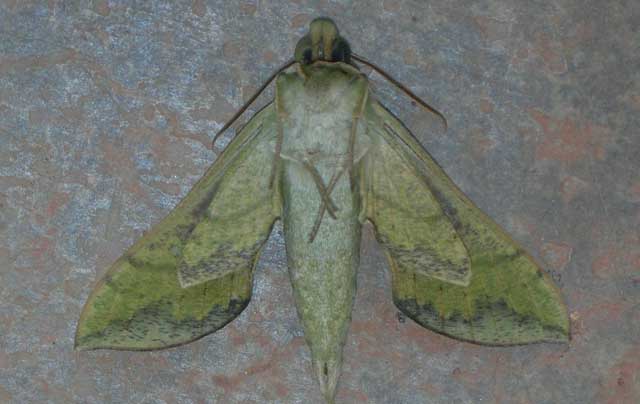
Xylophanes marginalis (verso), Itanhandu, Minas Gerais. Brazil,
September 8, 2012, courtesy of Larry Valentine.
EGGS, LARVAE, PUPAE:
Larvae probably feed on
Psychotria panamensis and Psychotria nervosa
of the Rubiaceae family and on
Pavonia guanacastensis of the Malvaceae family.
Moths emerge approximately one-two months after larvae pupate.
Use your browser "Back" button to return to the previous page.
Goto Main Sphingidae Index
Goto Macroglossini Tribe
Goto Central American Indices
Goto Carribean Islands
Goto South American Indices
Goto U.S.A. tables
Use your browser "Back" button to return to the previous page.
This page is brought to you by Bill Oehlke and the
WLSS. Pages are on space rented from Bizland. If you would like to become a "Patron of the Sphingidae Site", contact Bill.
Please send sightings/images to Bill. I will do my best to respond to requests for identification help.
Enjoy one of nature's wonderments: Live Saturniidae (Giant Silkmoth) cocoons.
 | 
Show appreciation for this site by clicking on flashing butterfly to the left.
The link will take you to a page with links to many insect sites. |








